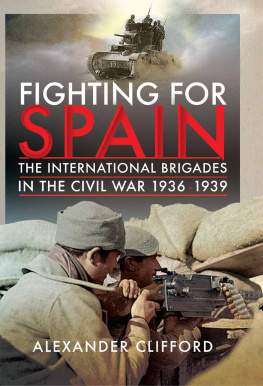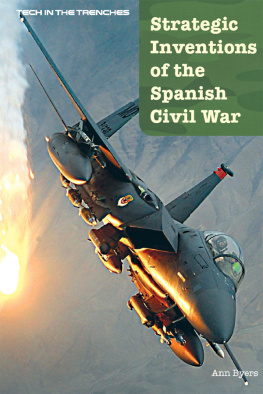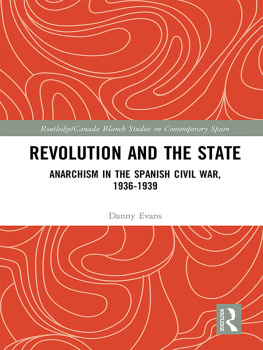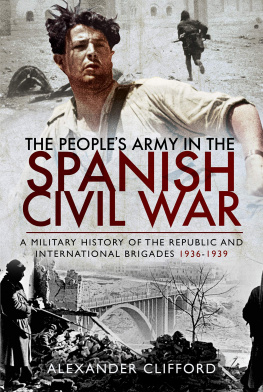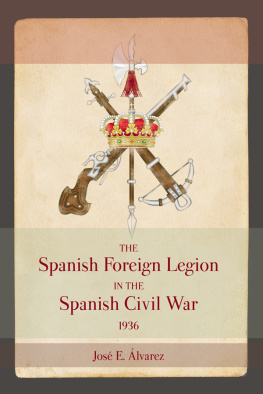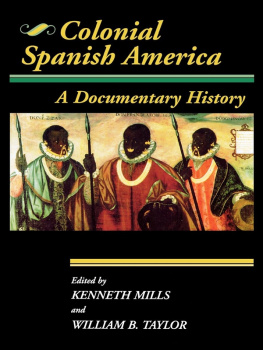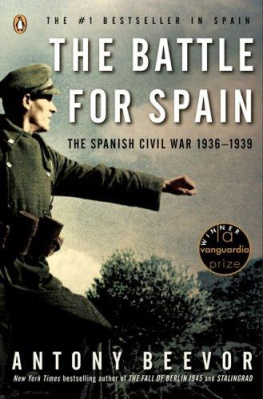
Guns, Culture and Moors
The history of the Moroccan troops in the Spanish Civil War (19361939) is the story of an encounter between two culturally and ethnically different people, and the attempts by both sides, Moroccan and Spanish, to take control of this contact. This book shows to what extent colonials could participate in negotiating limits and taboos rather than being only on the receiving end of them. The examination of this encounter, in its military, religious, as well as sexual aspects, sheds new light on colonial relations, and on how unique or typical the Spanish colonial case is in comparison to other European ones.
Ali Al Tuma is a JSPS fellow at the United Nations University in Tokyo, and was a faculty member at Leiden University.
Routledge/Caada Blanch Studies on Contemporary Spain
Edited by Paul Preston and Sebastian Balfour, Caada Blanch Centre for Contemporary Spanish Studies, London School of Economics, UK
11 Gunpowder and Incense
The Catholic Church and the Spanish Civil War
Hilari Raguer, translated by Gerald Howson
12 Nazi Germany and Francoist Spain
Christian Leitz
13 Churchill and Spain
The Survival of the Franco Regime, 194045
Richard Wigg
14 The Foundations of Civil War
Revolution, Social Conflict and Reaction in Liberal Spain, 19161923
Francisco J. Romero Salvad
15 Ethnicity and Violence
The Case of Radical Basque Nationalism
Diego Muro
16 Medicine and Warfare
Spain 19361939
Nicholas Coni
17 The Francoist Military Trials
Terror and Complicity, 19391945
Peter Anderson
18 The Politics and Memory of Democratic Transition
The Spanish Model
Edited by Diego Muro and Gregorio Alonso
19 Mass Killings and Violence in Spain, 19361952
Grappling with the Past
Edited by Peter Anderson and Miguel ngel del Arco Blanco
20 Claiming the City and Contesting the State
Squatting, Community Formation and Democratization in Spain (19551986)
Inbal Ofer
21 Guns, Culture and Moors
Racial Perceptions, Cultural Impact and the Moroccan Participation in the Spanish Civil War (19361939)
Ali Al Tuma
22 State and Revolution
Anarchism in the Spanish Civil War, 19361939
Danny Evans
Guns, Culture and Moors
Racial Perceptions, Cultural Impact and the Moroccan Participation in the Spanish Civil War (19361939)
Ali Al Tuma
First published 2018
by Routledge
2 Park Square, Milton Park, Abingdon, Oxon OX14 4RN
and by Routledge
711 Third Avenue, New York, NY 10017
Routledge is an imprint of the Taylor & Francis Group, an informa business
2018 Ali Al Tuma
The right of Ali Al Tuma to be identified as author of this work has been asserted by him in accordance with sections 77 and 78 of the Copyright, Designs and Patents Act 1988.
All rights reserved. No part of this book may be reprinted or reproduced or utilised in any form or by any electronic, mechanical, or other means, now known or hereafter invented, including photocopying and recording, or in any information storage or retrieval system, without permission in writing from the publishers.
Trademark notice: Product or corporate names may be trademarks or registered trademarks, and are used only for identification and explanation without intent to infringe.
British Library Cataloguing in Publication Data
A catalogue record for this book is available from the British Library
Library of Congress Cataloging in Publication Data
A catalogue record for this book has been requested
ISBN: 9781138298132 (hbk)
ISBN: 9781315098814 (ebk)
Typeset in Times New Roman
by Florence Production Ltd, Stoodleigh, Devon
This research was supported by the Netherlands Organization for Scientific Research (NWO) under project number: 017.007.143.
Contents
PART I
Combat and life in the army
PART II
Women and religion
PART III
The Moroccan as enemy, the Moroccan as brother
Tables
Maps
A.2 The progress of the Spanish Civil War
Figures
A.3 The headquarters of Radio Sevilla
A.4 The author at the Muslim cemetery of Granada
A.5 Letter by a Moroccan soldier
A.6 Moroccan cavalry in a victory parade
A.7 The photograph, published by Keystone in November 1936, shows a Russian tank captured by Moroccans al Torrejn
A.8 Nationalist General Varela wearing the Moroccan chillaba
A.9 and A.10 The uniforms of the Regulares
A.11 The emblem of the Regulares of Ceula
A.12 The emblem of the 13th Division
A.13 The decree, in 1942, conferring the Spanish nationality on a Moroccan veteran of the Civil War.
A.14 and A.15 The first two Spanish Civil War veterans interviewed by the author
A.16 The author with two Spanish Civil War veterans
A.17 Abdesselam Mohammed Al Amrani (left) and Mohammed ben Al Ayyashi Al Zerki, two Spanish Civil War veterans
A.18 Masoud Ballah. a veteran of the Spanish Civil War
A.19 Poster of the 100th anniversary of the foundation of the Regulares
A.20 Regulares during the celebrations of the 100th anniversary of the foundation of their regiment
Many have made it possible for me to embark on this long research journey. I thank NWO for giving me this valuable opportunity by financing this study, through its Mosaic project. My supervisors and friends Henk te Velde and Eric Storm filled this work with their useful insights and suggestions, and helped me patiently find the way whenever I stumbled on blocks on the road. Another mentor, Peer Vries, originally inspired me to research the role of the Moroccans in the Spanish Civil War, and to his advice and valuable suggestions I owe much. I can never express enough gratitude to Shannon E. Fleming who spent so much time and effort in reviewing my work and suggesting improvements both in style and content.
The help of many others was crucial. In Morocco I am much indebted to Mustapha El Merroun who facilitated the contact with the Association of Former Combatants and Victims of War but who was also generous with the oral history material that he spent years collecting. I also thank the people in the Association of Former Combatants and Victims of War who helped me interview wartime veterans, from its head in Rabat, Al Amin Rqibat whom I met in 2011, to the various directors of its branches in Tetuan, Chefchaouen, Zumi, Alcazarquivir, Asilah and Nador, specially Ahmad Al Iraqi, Abdesselam Al Haddad and Al Misbahi. Also of immense help was the historical section of the Regulares regiment in Ceuta, and particularly Sergeant Rosado. To all the staff in the different Spanish, Moroccan, French and Dutch archives and libraries, my gratitude for the overwhelming help, advice and support I received.
I am also grateful to: Sebastian Balfour, Marlou Schrover, Ben Schoenmaker, Gert Oostindie and Umar Ryad for their insights and helpful feedback. Other people who helped realize, enrich or improve this work include: Rudibert Kunz, Jonathan Browne, Annelieke Vries-Baaijens, Geoffrey Jensen and Soufyan Ballah.


